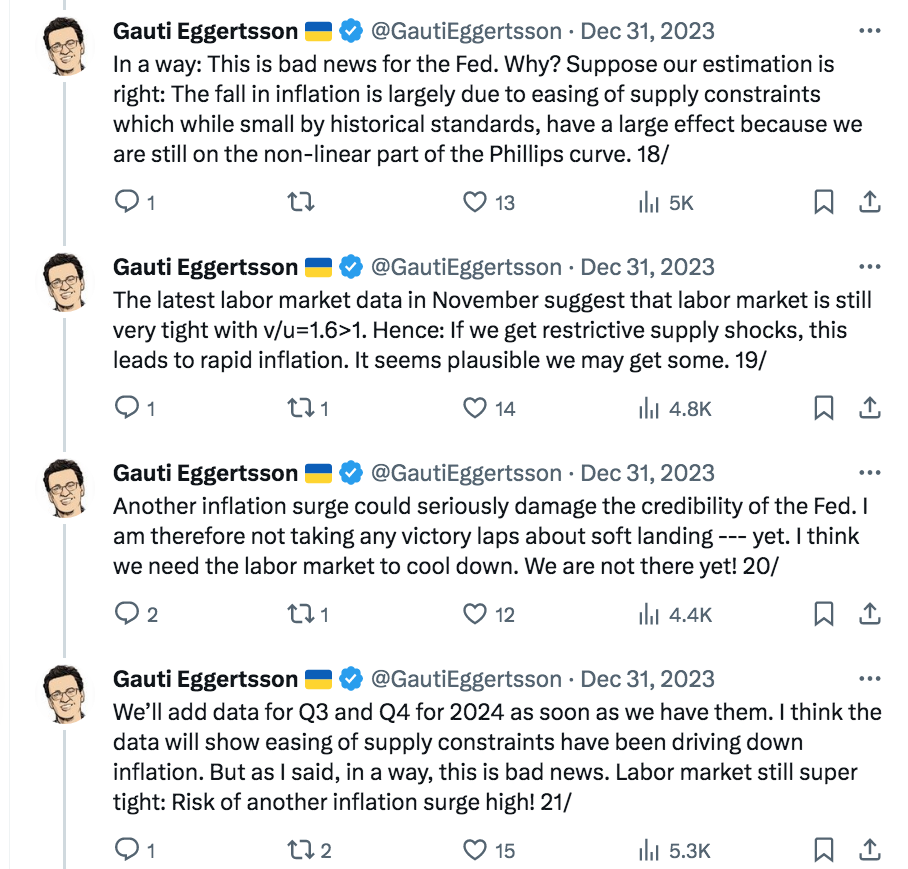Why Such Low Unemployment?

Image Source: Pixabay
Economists have done a lot of head-scratching about the fact that inflation has come down without a big rise in unemployment. This is seen as a violation of the Phillips curve model.
But Phillips did not look at the relationship between price inflation and unemployment; he looked at the relationship between wage inflation and unemployment. And wage inflation hasn’t come down very much since August 2022:
Wage inflation fell slightly between 2021 and 2022. But for the past 17 months, wage inflation has averaged about 4% at a compound annual rate. That’s about one percentage point above the level required to hit the Fed’s 2% price inflation target.
If you squint hard enough, it looks like there might have been a tiny downward trend since August 2022, but very, very gradual. Thus, there was absolutely no reason to expect significantly higher unemployment on the basis of falling inflation. Price inflation is not important, and the inflation that is important (wage inflation) has hardly fallen at all in recent months.
The good news is that we’ve avoided high unemployment so far, while the bad news is that we haven’t made much progress in reducing wage inflation. I hope 2024 brings slower nominal wage growth—the final step required for a soft landing.
On a related point, Gauti Eggertsson does a good job of making the case that (contra Yellen) we are still well short of a soft landing:
More By This Author:
Newcomb's Paradox And The Banality Of SuccessMoney/Macro: Who Is The GOAT?
With NGDP Everything Becomes Much Clearer





